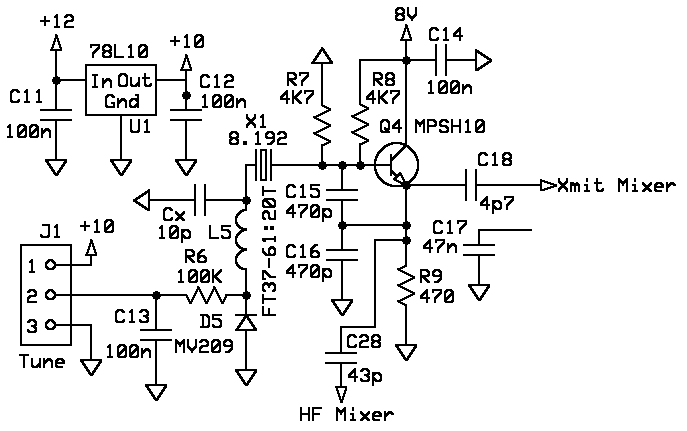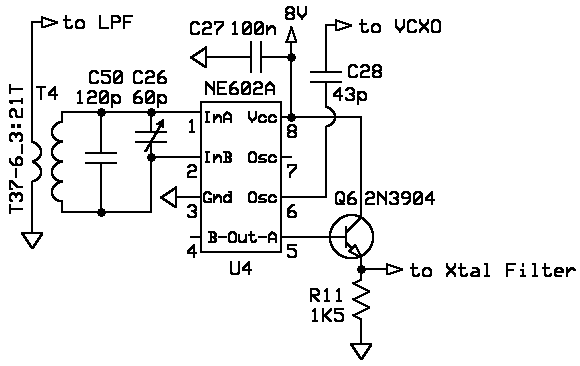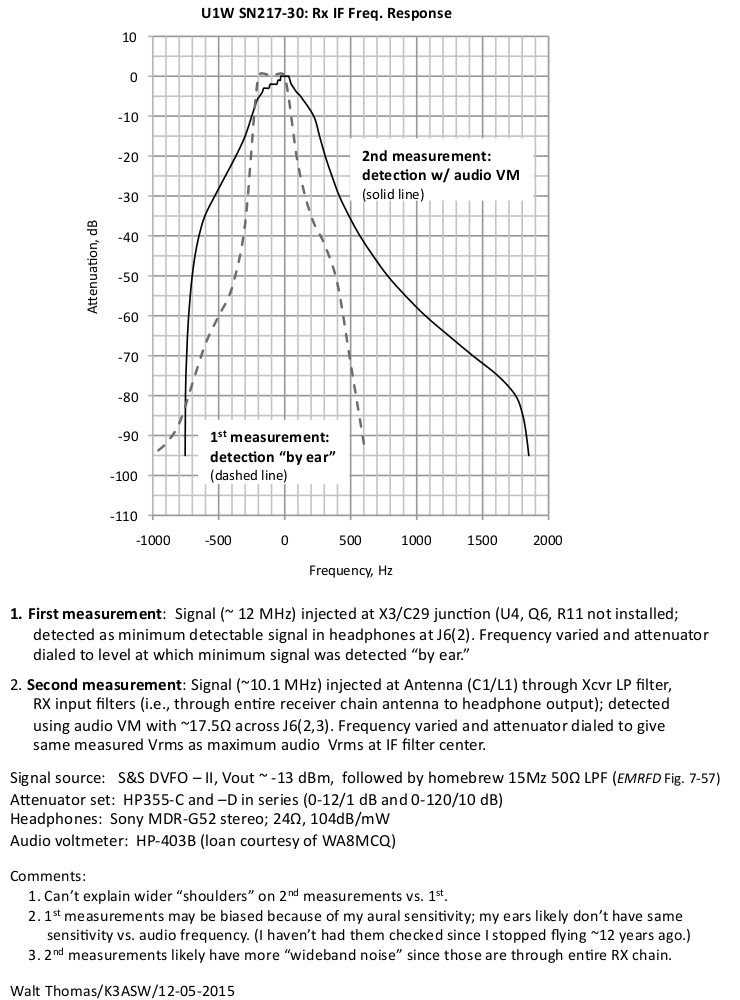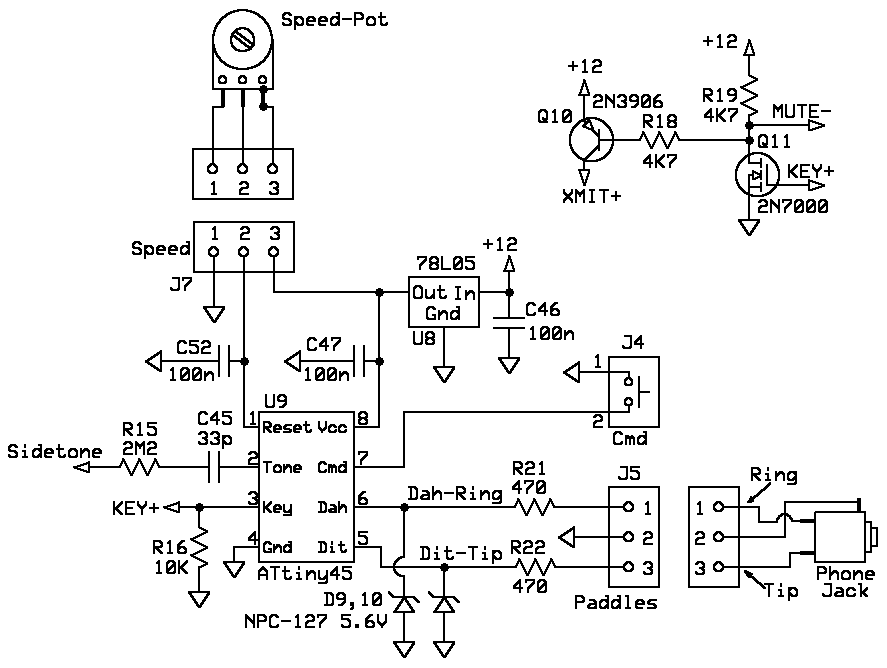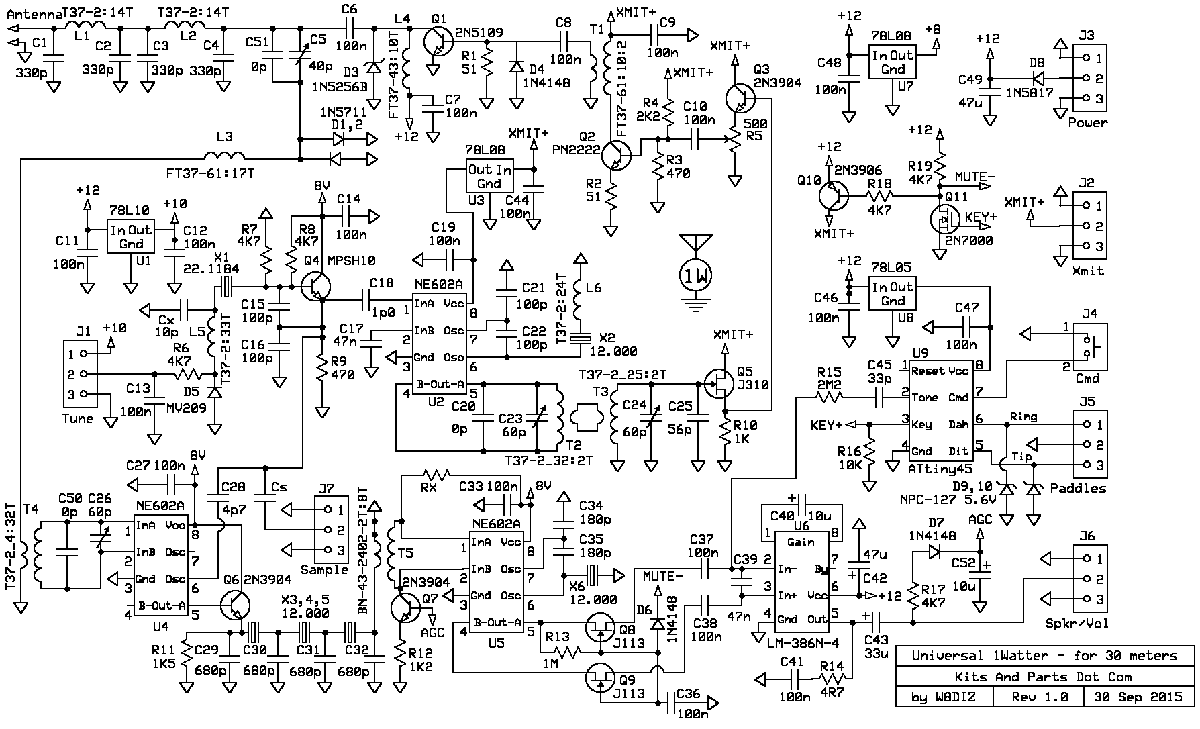
The 1Watter QRPp Transceiver
Service Manual
Last Updated Tue, 13 Jul 2021 17:10:46 -0400

Block Diagram
Voltage Controlled Crystal Oscillator (VCXO)
Receiver Section
Low Pass Filter
First Mixer
Crystal Filter
Frequency Response (by K3ASW)
Audio Detector Mixer (BFO) with AGC
Audio Amplifier with Mute
Transmitter Section
Transmit Carrier Oscillator Mixer
Transmit Band Pass Filter and Preamps
Transmit Driver
Transmit Final Amplifier
Keyer and QSK Operation
Schematic
Printed Circuit Board

